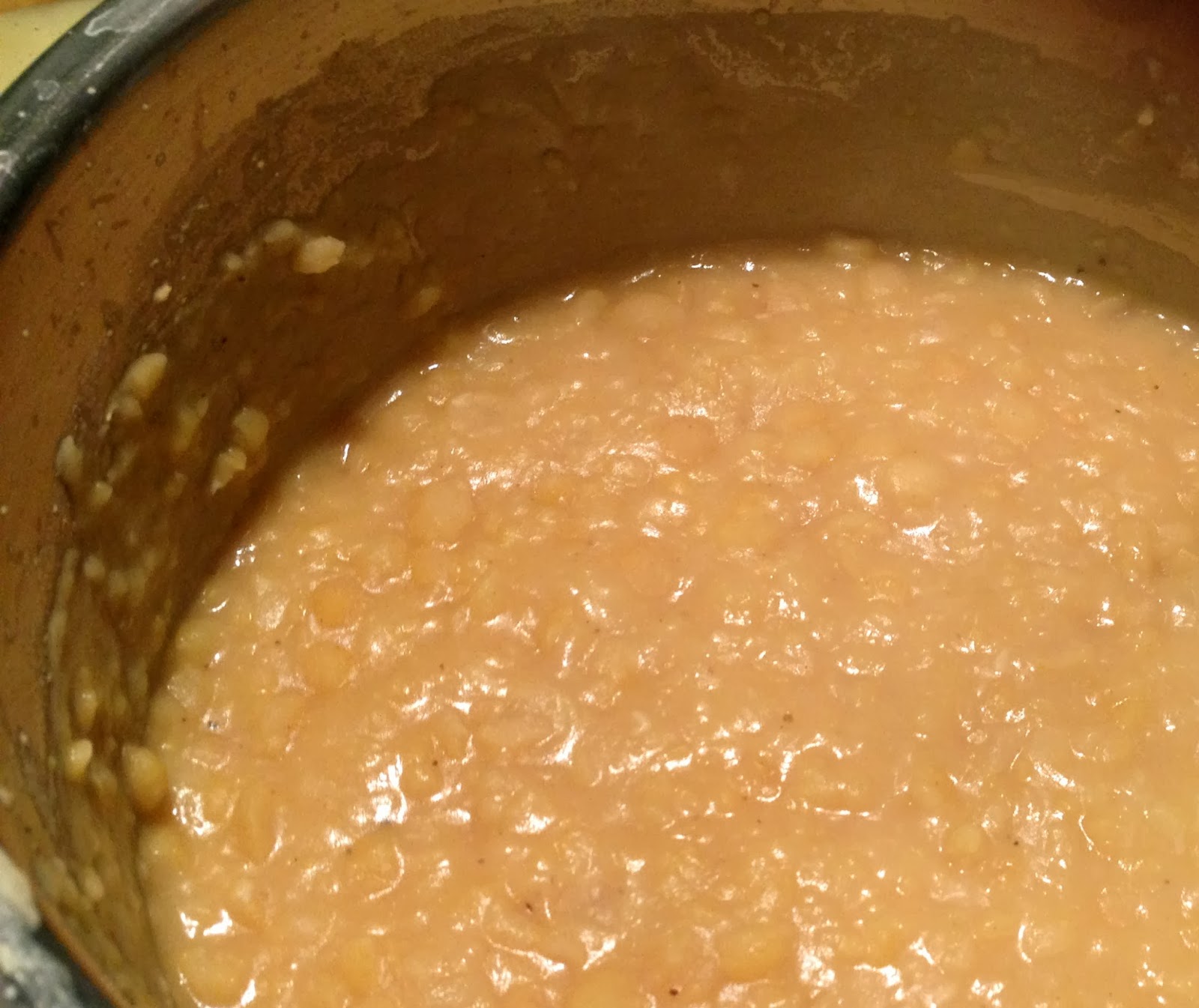 |
| Ham and Pease Pudding just like I remember |
 |
| A dish of yummy mushiness! |
I recently decided to have a go at making my own pease pudding the traditional way - cooked in muslin in the same pot as a gammon joint. It was great fun and really felt like I was doing some good old fashioned home cooking. The recipe below produces a simple pease pudding that tastes just like I remember and it can easily be adapted for vegetarians - the notes section below explains.
Notes: For a vegetarian version of this recipe, or to make the pease pudding without the ham, simply poach the muslin-filled bag of pureed peas in vegetable stock (or chicken stock for non-vegetarians) for the time specified.
I used a 1kg gammon joint but for a larger or smaller joint adjust cooking times accordingly.
Ham hock is a cheaper alternative to gammon so for an even more economical meal the gammon can be replaced with ham hock.
Where muslin isn't at hand (and lets face it how many of us have a piece of muslin lying about in our kitchen?) a clean tea towel works well - I remember my grandma cooking up a dumpling this way. Ensure the tea towel is tied tightly before immersing in the stock as the peas need to stay together and not break down while the pudding cooks.
Ingredients:
1 unsmoked gammon joint
1 stick of celery
1 carrot
1 onion
4 bay leaves
6 whole black peppercorns
300g yellow split peas soaked in cold water for approx 2 hours
1 beaten egg
salt and pepper
Method:
1. Cut the celery and carrot into 2-3 large pieces and the onion in half (there's no need to peel
 |
| The gammon is ready for cooking |
2. Place the pan on the hob and bring to the boil. Once boiling turn down to a simmer, cover and cook for 1 hour.
3. Meanwhile, drain and rinse the peas and place in a separate saucepan with approximately 700ml of cold water. Add salt, pepper and the remaining 2 bay leaves.
 |
| Don't let the peas dry out - add more water if required |
5. Once the peas are cooked, remove from the heat and puree the peas using either a hand blender,food processor, potato masher or a sieve. The puree should be fairly smooth but it doesn't matter if there is the odd whole pea left - it will add some texture!
6. Add the beaten egg to the peas and mix well.
 |
| The finished pease pudding still in its muslin bag |
8. Simmer the peas with the gammon for the remaining cooking time (approximately half an hour).
9. When the gammon is thoroughly cooked, remove it and the bundle of peas from the saucepan and leave to rest for a few minutes.
10. When cool enough to handle, remove the peas from the muslin or tea towel and place in a serving bowl. Carve the gammon and enjoy - it's delicious served with a dollop of English mustard!
No comments:
Post a Comment